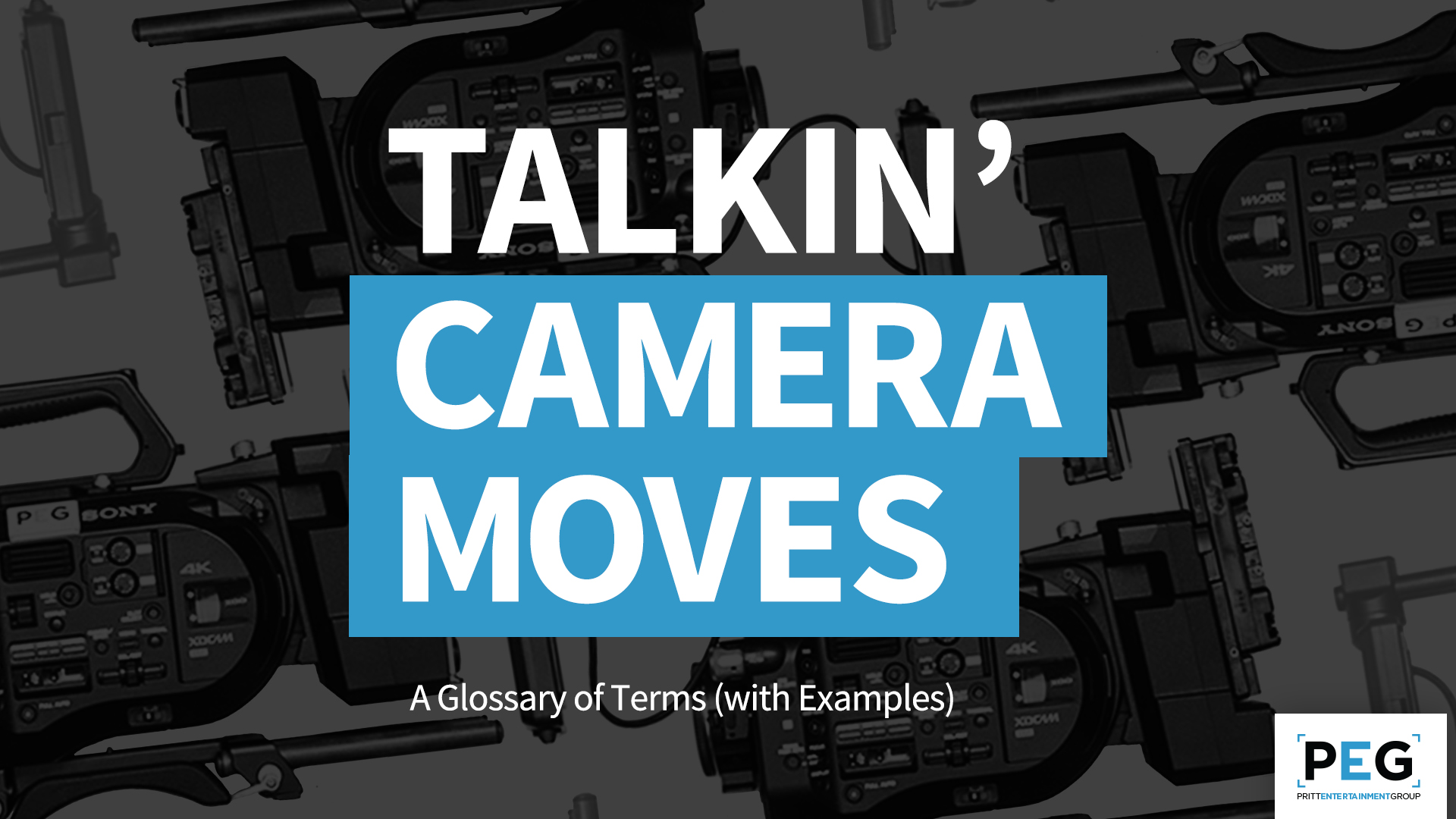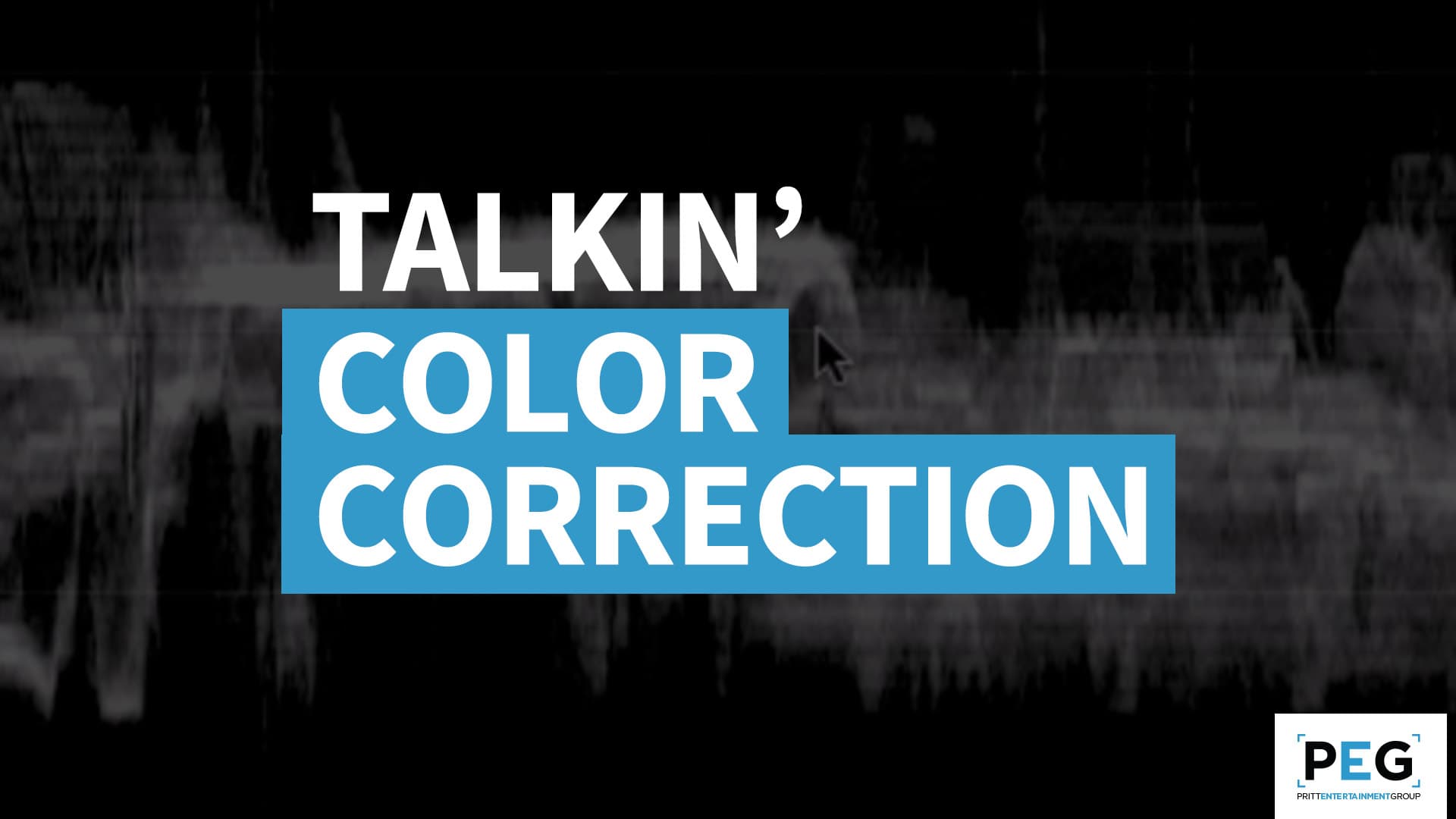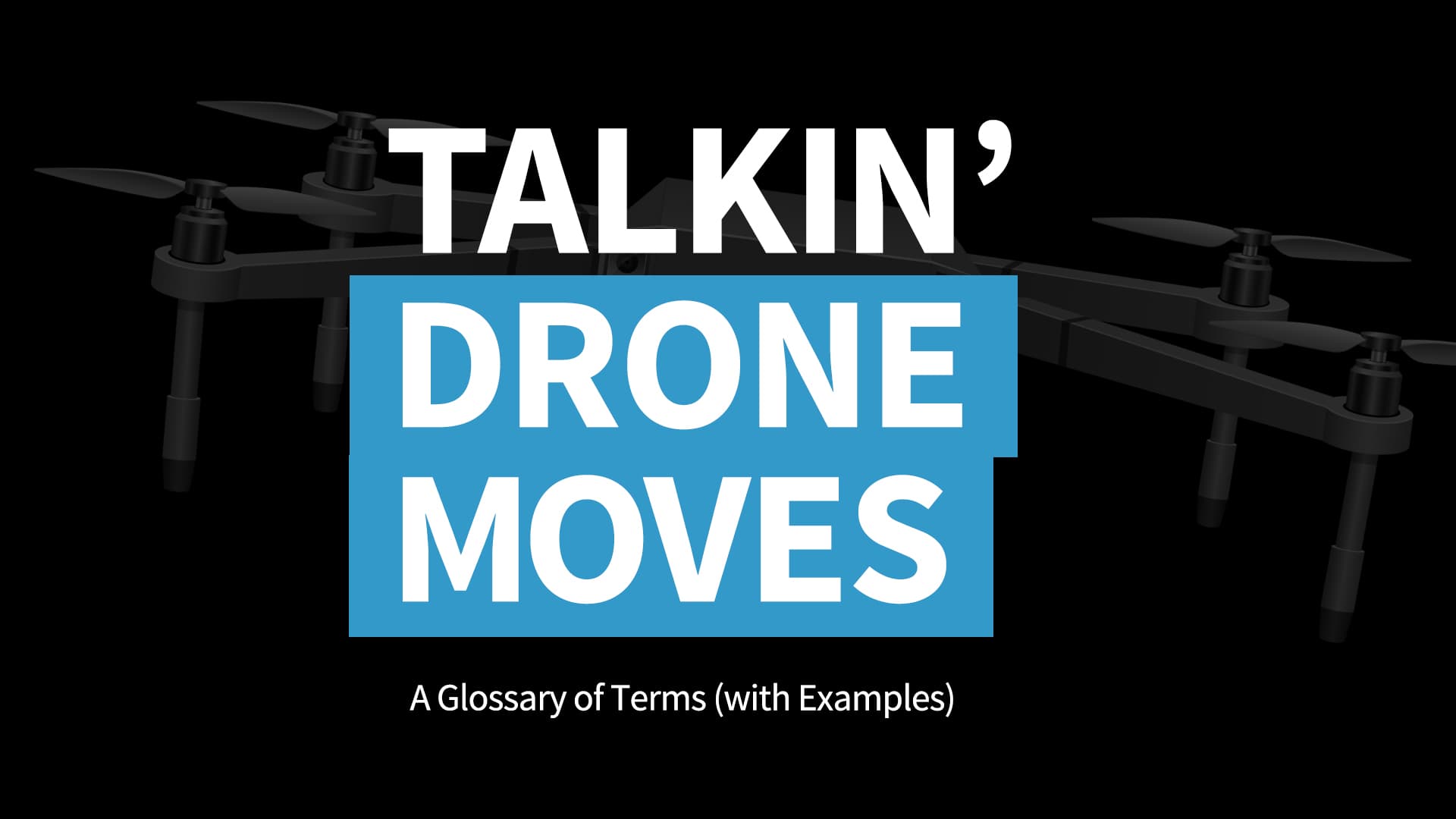Video Terms Glossary
Video terms can sometimes feel like a different language. So, our team put together this glossary of common lingo to help everyone understand what we talk about everyday. Is our list missing a video term you want explained? Just let us know!
Airspace Waiver
An Airspace Waiver is required to fly a drone in any airspace the FAA considers "restricted." This most often occurs when there are plans to fly our DJI Inspire 2 near an airport or outdoor stadium. (Don't worry our FAA Licensed Pilots know how this process works and handle the logistics!)
Aperture
This is a camera setting we use to control the exposure and depth of field of any given shot. The aperture of a lens controls the amount of light that passes through to the sensor. Normally, aperture is denoted by a lowercase f and a number like f/2.8
Audio Sync/Timecode
When we use Two System Audio, it is important to consider how we will sync all of the final files when we edit. We use wireless timecode lockers to give all our devices a perfectly synced timecode which allows us to line it all up with one click in post-production.
B-Roll
This refers to any footage captured to supplement the story being told via our narration. This can be beauty shots, shots of someone performing an action, groups of people laughing or working. Basically anything. B-Roll is commonly used to break up segments of interview or long speaking segments.
Boom Mic
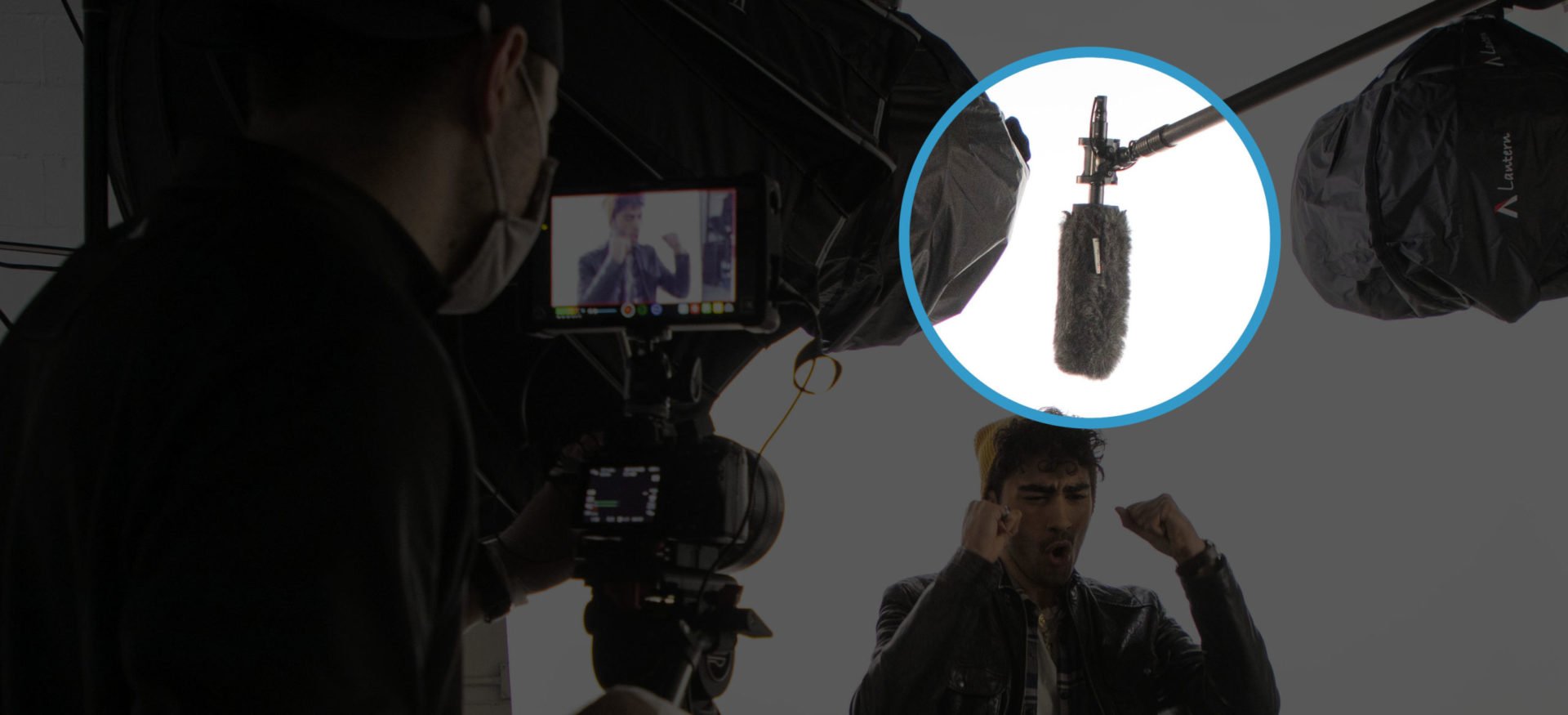
This is a microphone on a boom pole, positioned just above and in-front of the subject. It provides high-quality audio and less background noise than a lav mic (see below).
Chromatic Aberration

When you see colors on the edges highlights that aren’t supposed to be there, most commonly pink or green. It is caused by the lens, not the camera, and will require some pretty precise color correction to fix in post.
Cinema Camera
Cinema Camera is a general term for high-end cameras that produce a “Cinema Look” which is something we are all used to seeing on the big screen, like our RED Scarlet-W. They also generally shoot higher-quality footage with more information for complex color correction.
Cinema Prime Lenses
For us, these are our Canon C-NE’s. The "cinema" part of this means the lens is a much more precisely machined lens with a long focus throw and basically no chromatic aberration (see above). The "prime" part just means these are fixed focal length lenses - so no zoom.
Color Card
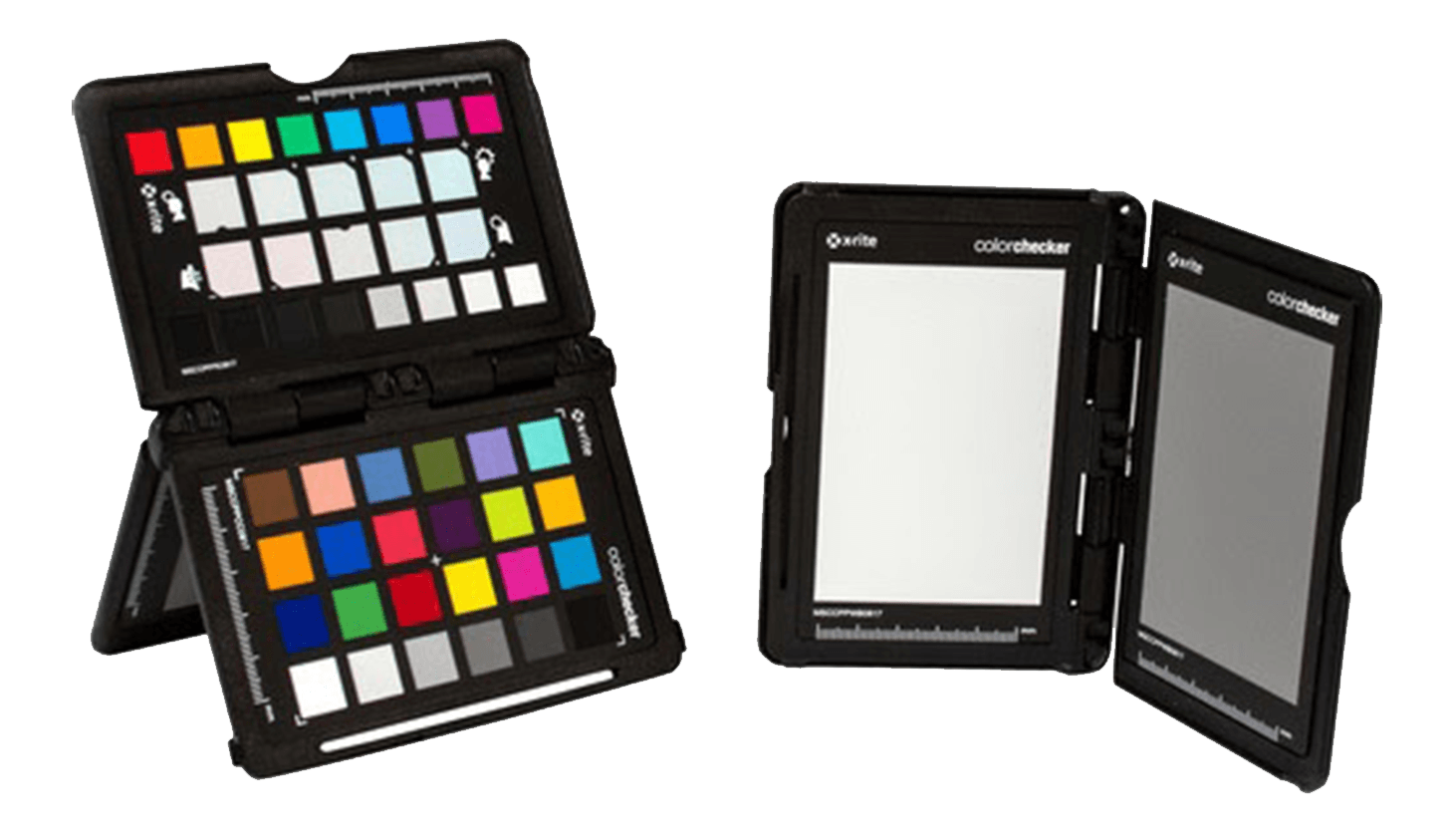
A useful tool, this helps us have a frame of reference for correct colors in post. It also includes useful references for exposure. Just an all-around handy way to make sure a shot is accurate.
Color Correction
Just like it sounds, this is the process of taking raw footage and correcting color values to either make it accurate to the human eye, or to apply a style that helps drive the emotion of the piece. Want a more in-depth look at color correction?
Crop Factor
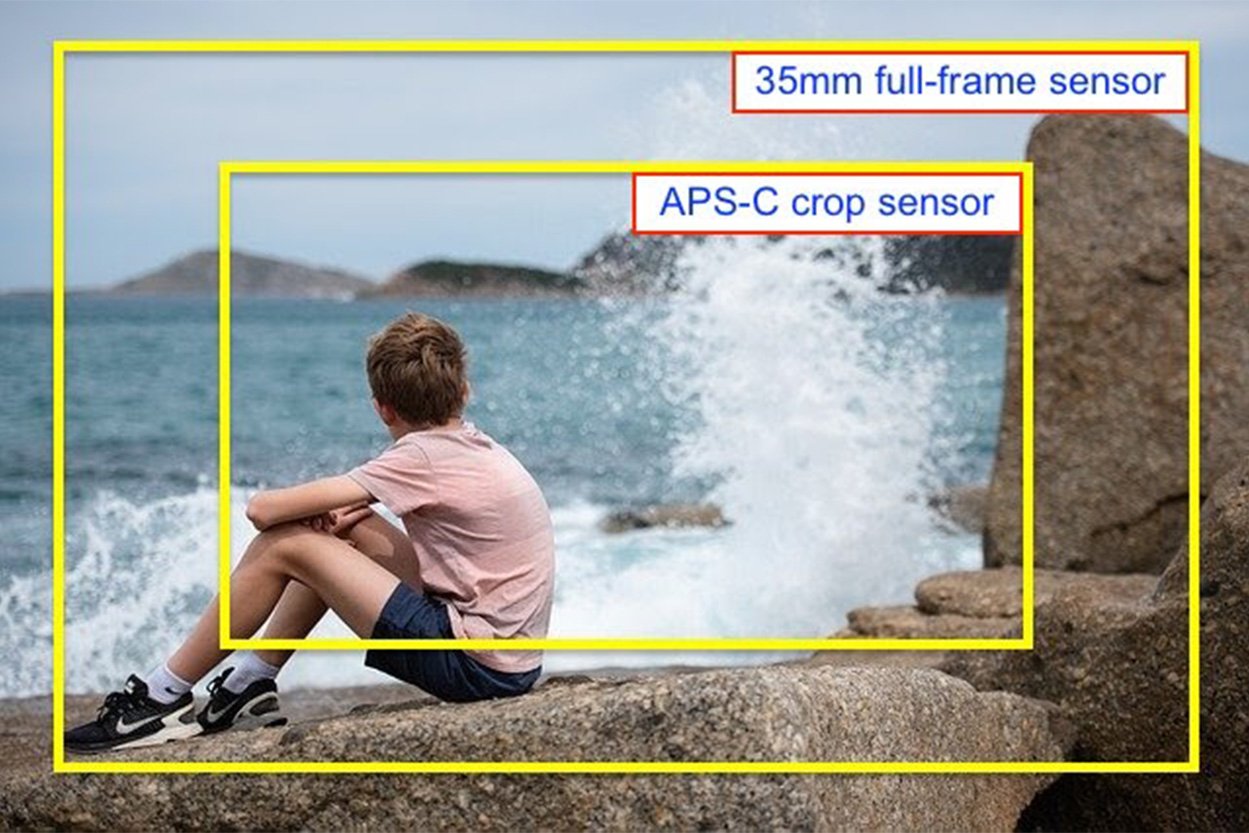
The easiest way to explain this is that lenses are made to capture more of a scene than some sensors can see. If your sensor is too small, there is a crop factor (for example APS-C sensors have a crop factor of 1.5.) What this means is that if you are using an APS-C sensor, you are not seeing the full image that your lens could provide. For instance a 50mm lens at a crop factor of 1.5 is actually acting like a 75mm lens.
Data Rate
Data rate is exactly what it sounds like. The data per second of a given video, normally measured in kilobits per second (kbps). This is very important when planning a streamed event, or when getting the best quality video you can while not going overboard on file size.
Depth of Field
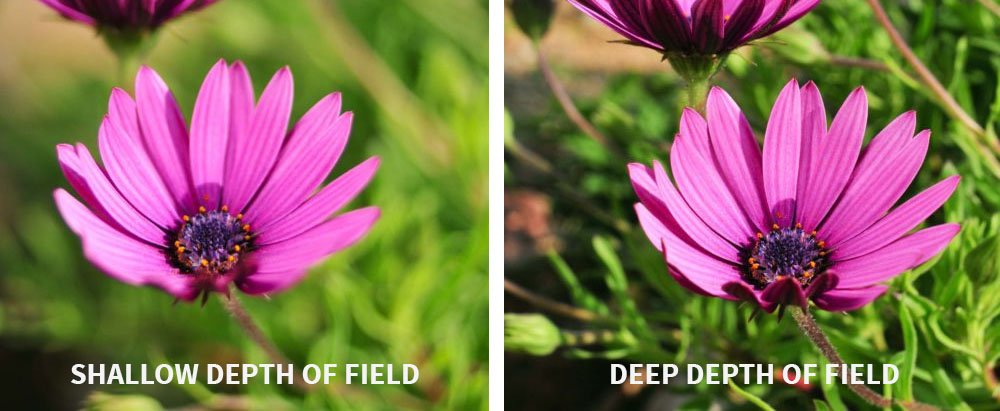
Depth of field (DOF) has a direct relationship with aperture and focal length, the more wide open your aperture (letting in more light) and the longer your focal length, the shallower your depth of field. This means that when you pull focus on your subject, the background and foreground elements will be varying levels of out of focus depending on how you set your aperture. If you want everything in focus, it would be best to lower your aperture until you get the DOF you want, then adjust lighting accordingly.
Diffusion
The process of taking a targeted light source and spreading the beam out evenly to get a nice softer look on our subject and reduce any harsh shadows or glares.
Dolly
A dolly is a tool used most commonly on a track, to move a camera through a scene and get a shot with smooth motion. Adding motion to shots is a great way to make anything more interesting and eye catching. At PEG, we use our Dana Dolly or our Kessler Motorized Slider to achieve this look.
Focus
Also known as focal length, focus is a setting on the lens that reflects the distance from the sensor that we want to “focus” on. The part of the image that is in focus will be the most crisp. Through depth of field you can have parts of your image in focus, while others are out of focus - which creates a very nice effect and helps direct your viewers eye to the subject of your shot.
Frame Rate
This is the number of frames we are capturing per second while filming. Common frame rates in the US are 24, 30 and 60. We also capture high frame rate content to show something in slow motion without it appearing choppy. Normally those clips, however, are conformed back down to one of the common rates listed above for distribution.
Full Frame
This is a sensor that's the same size as the sensor of an older analog camera. A few big advantages of a full-frame camera is that it has no crop factor (see above), provides a shallower depth of field and has better noise performance.
Gimbal
A gimbal is a stabilizer for a camera that allows us to move freely without worrying about the shot being shaky. At PEG, we use a Ronin 2 and a Ronin RS2 as our gimbals of choice on the ground, but we also use a gimbal on our Inspire 2 Drone. These are machines with 3 axis motors (Pan, Tilt, and Roll) that counteract our influences on each axis. If we take a big step and the camera would normally shake up and down, these motors hold it steady instead.
Green/Blue Screen

These are a large backdrop that is all the same color green or blue. It allows you to very easily cut your subject out of the frame in post-production and place them in a totally different environment.
Grip
A grip is a person on a shoot who acts as an extra pair of hands for the whole set. If anyone needs anything, the grip will run and grab it! They normally have quite a bit of extra gear on their person and are never far from the cameraperson.
High Frame Rate
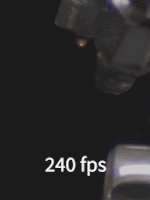
Capturing in a high frame rate allows us to get much more detail on a moving subject. In our case, we film sports and industrial content often, so a player running or a machine moving quickly are very good use cases for this. The reason we get more detail is that much more data is captured, instead of using a traditional 24 frames per second, we can shoot up to 240 frames per second! So, instead of a fast moving object jumping around, we see it clearly throughout the whole motion.
Lav Mic
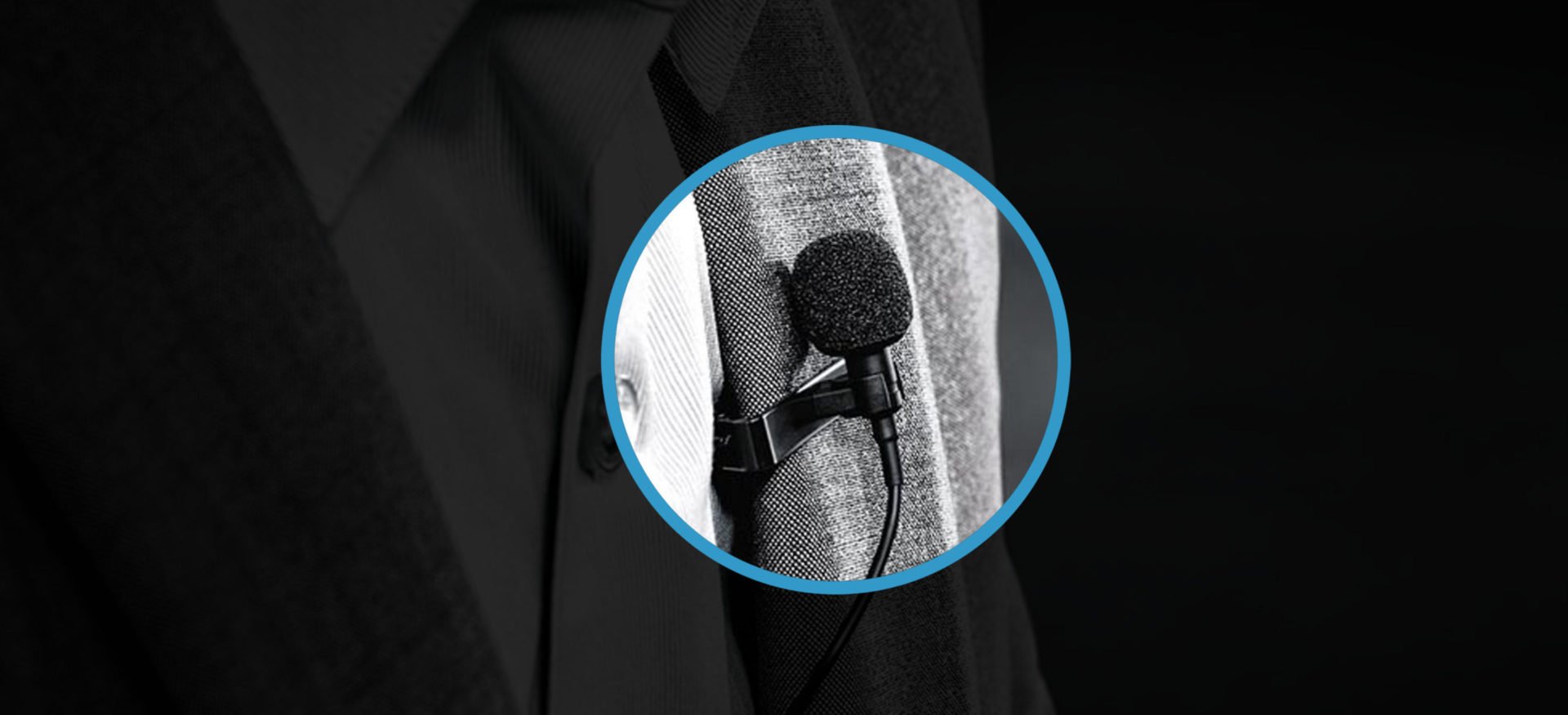
A lav mic (or lavalier mic or lapel mic) is a wearable, discrete microphone best for capturing run-and-gun audio with a host or moving subject. Normally, these are wireless and are easily hidden in the subject's clothes. You can get good quality audio without having an audio person chasing people with a boom mic just by choosing a lav mic instead!
RAW Footage
This is sometimes a general term used to describe any footage straight out of a camera, but in our case this isn’t exactly accurate. Several of our cameras actually shoot true RAW footage, which means we have a ton of control of over color in post. To put it plainly, nothing is burnt into these files and they are essentially raw data ready to be adjusted and corrected as we see fit. Want a more in-depth look at footage?
Resolution
Resolution is the size (in pixels) of a video. Common resolutions today are 1920x1080 (HD) and 3840x2160 (4k).
Room Tone
At the end of an interview, we like to capture 30 seconds of room tone. Room tone is a noise print of constant noise in the room, most commonly HVAC. We can use this print to isolate those sounds and remove them from our main recording to make our audio as clear as possible.
Run-and-Gun
We use this term to describe a video shoot where nothing ever stands still - where we are constantly on the run capturing content the whole time. Nearly any sports shoot or an event recap shoot are good examples of a run-and-gun-style shoot.
Scratch Track
It is important to have a timing reference when creating the first cut of a video. A scratch track is usually a lower-quality version of the voiceover for a piece used as a stand in before the final VO is recorded. Our team has recorded plenty of scratch tracks on iPhones or in makeshift booths just so our editors can have something as a reference while cutting a first draft.
Shot List
This is a list of shots with quick notation that gives our shooters a plan going into the shoot. We use abbreviations such as TS, MS, WS for tight shot, medium shot, and wide shot. Then we describe what we want to capture. An example of an entry on a shot list is “WS interior of factory floor, showing off capacity (preferably from high point).” These lists help us go into shoots with a plan and help keep us on-track (and on-time) during the day.
Shutter Speed/Angle
Shutter speed is the amount of time the shutter is open per one frame of video. This gets technical but our rule of thumb is to double our frame rate, and that becomes our shutter speed. So if we film in 24fps, we use a 1/48th shutter. Most of our cameras allow us to use a shutter angle, which conveniently does this math for us. By using a 180 degree shutter angle, it is always set correctly no matter what your frame rate is.
Stock Footage
Stock footage is footage that is available for purchase on the internet, which we can use to supplement the story you are trying to tell with your piece. Depending on the source of the footage, it can get expensive and the footage isn’t shot for a specific purpose. So, if it is viable, we usually recommend just planning a shoot day to get everything you want exactly how you want it.
Storyboards
These are individual frames meant to show you the concept of the video visually. For a footage based piece, the first frame may show the intro, then you may see a framing example with a lower third, then maybe an example of the outro. This all depends on the concept, but essentially this is the first visual look at all of the planning and scripting that has been done. It is where you get the first chance to actually visualize (and make changes to!) what your piece will look like when it is complete.
Teleprompter
This is a great tool that scrolls through a script right in front of the lens, so that the on-camera talent can read and appear to be looking at the viewer. Our system allows us to edit the script quickly on the fly and allows us to perfectly match the reading speed of our talent.
Three Point Lighting
This is a very standard interview lighting setup consisting of a key light, a fill light and a hair light. This setup is versatile in that it can provide a high contrast look with a shadow on one side of the subjects face, or it can provide a very flat non-dramatic look by lighting the face evenly.
Timelapse
A timelapse is a video comprised of thousands of photos taken in intervals. Any time you have seen a shot outdoors of the clouds moving extremely quickly through the sky, this was likely a timelapse. This style works great for longer-term captures, like construction projects, because the first photo is taken with nothing there, and throughout the capture you end up seeing something built from the ground up. Super cool.
White Balance/Color Temperature
If you have ever purchased an LED light and been mad because it was as bright as the sun and not “warm” at all, then you have experienced color temperature. This lighting attribute is measured in Kelvin (K), and is extremely important to cameras. Our eyes automatically adjust to the color temp of a room, but a camera does not. It is important to either be in complete control of the color temp of your lighting, or have a white card in frame to balance the camera properly.


